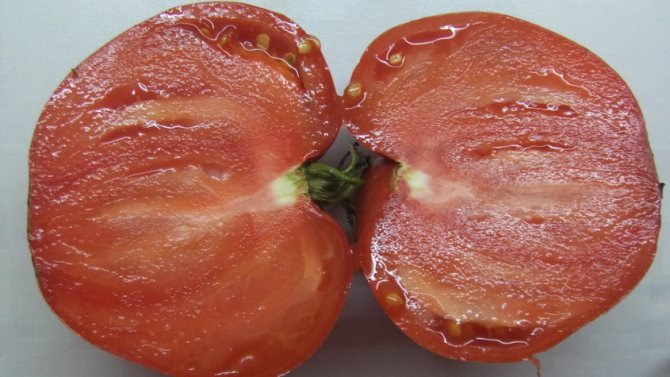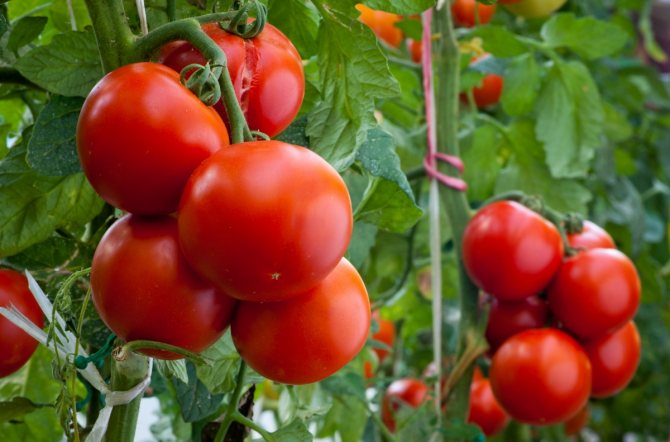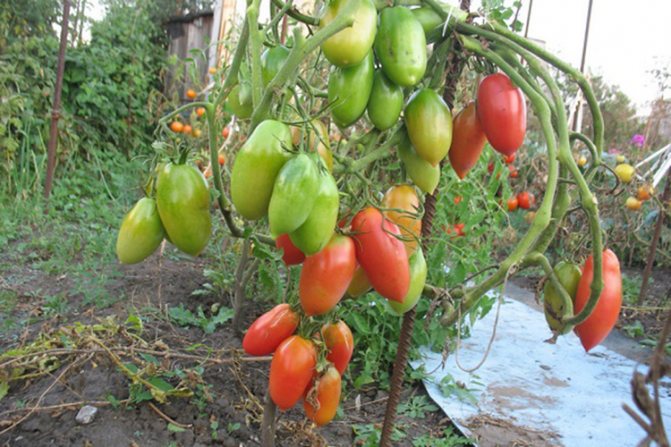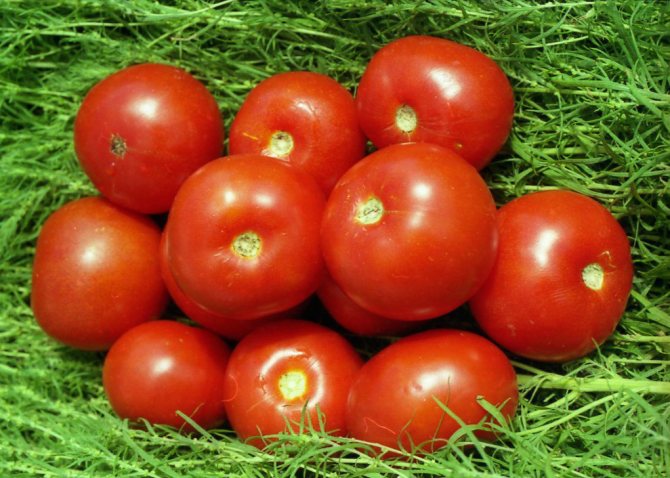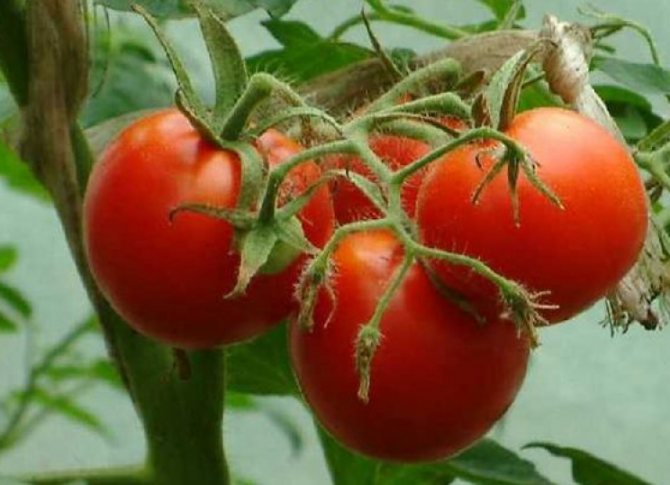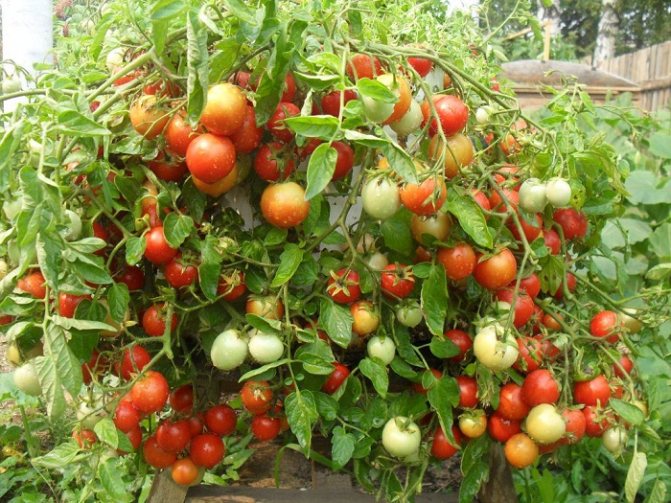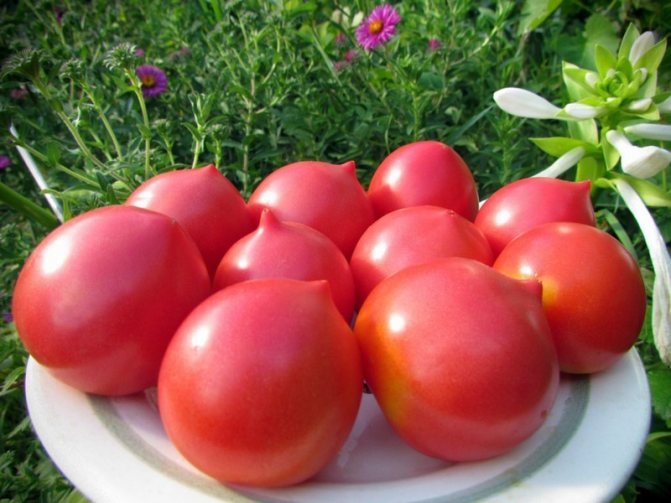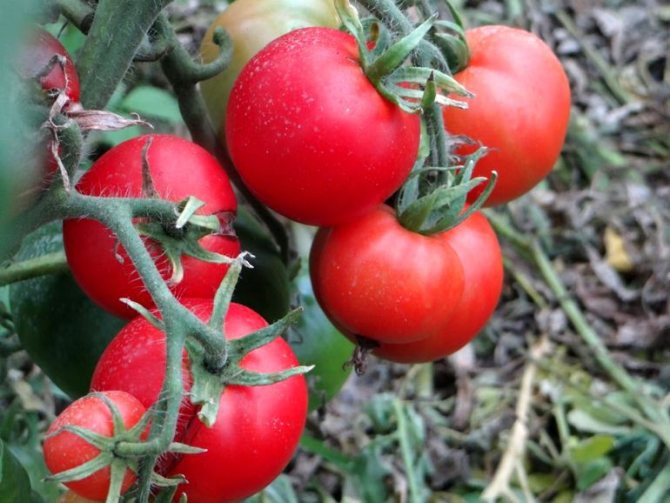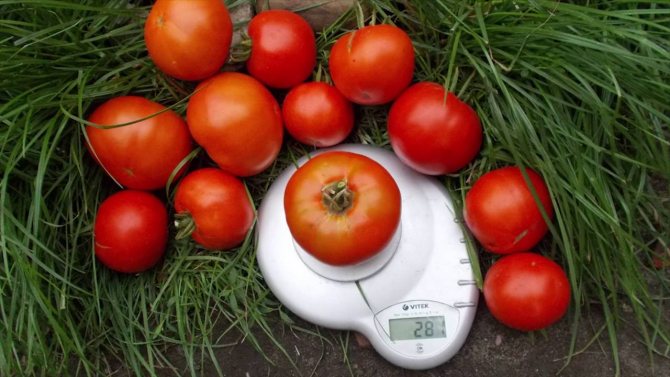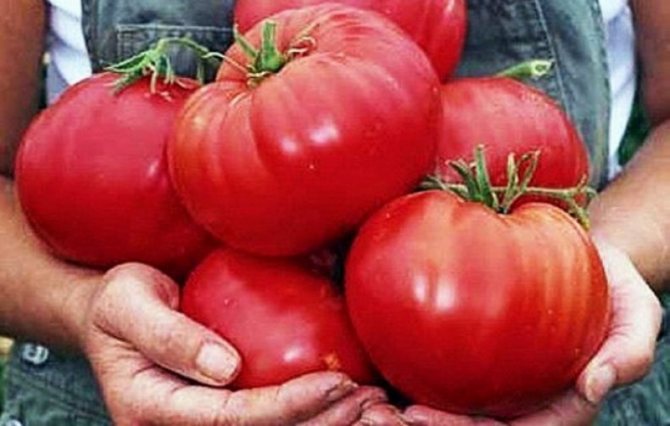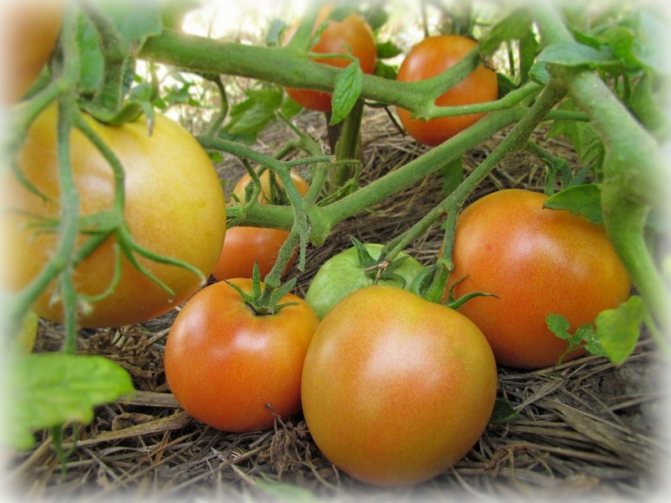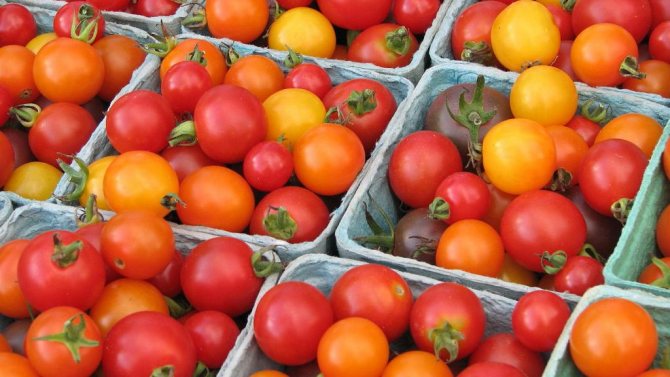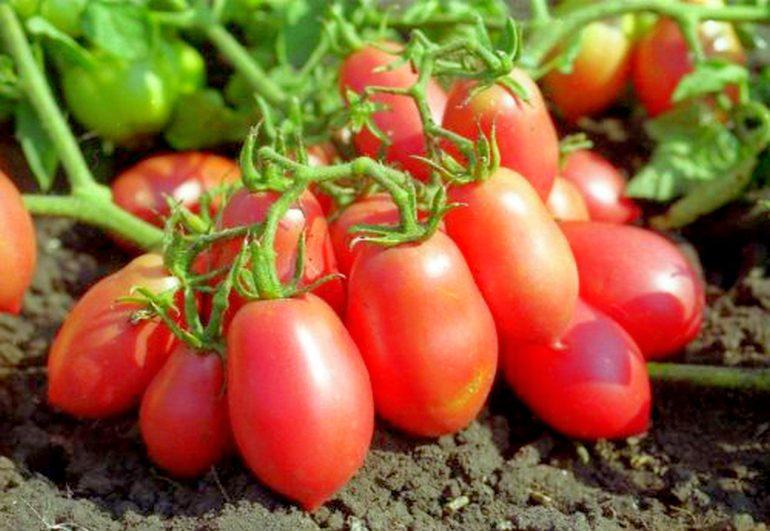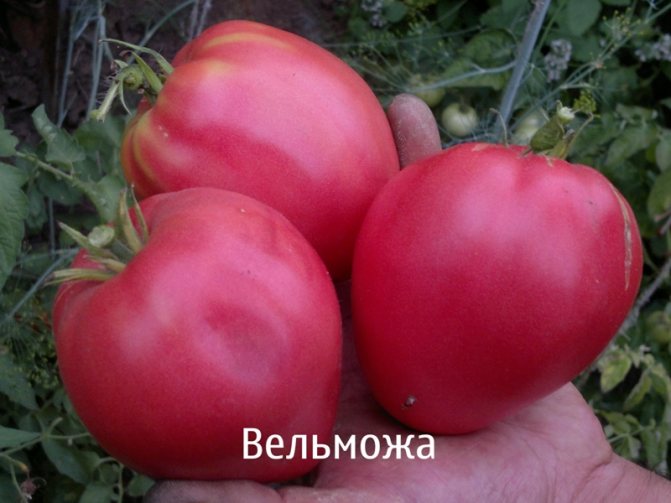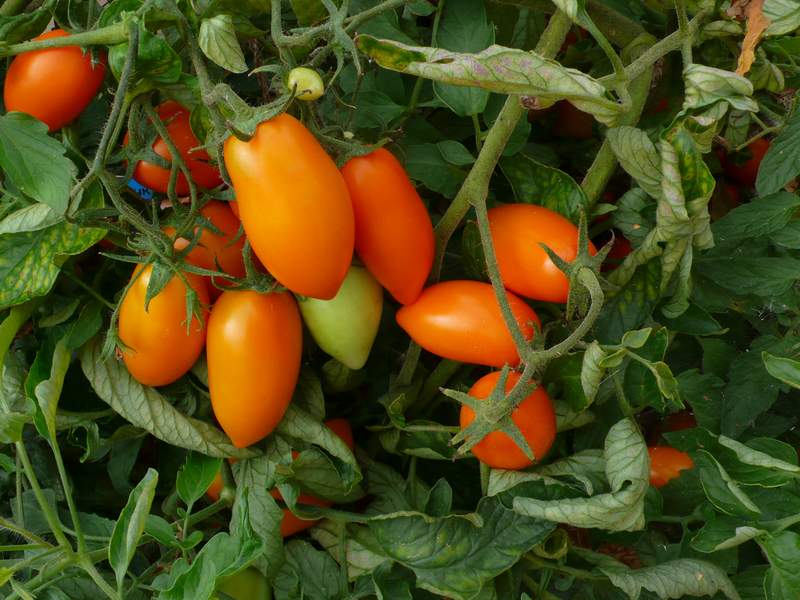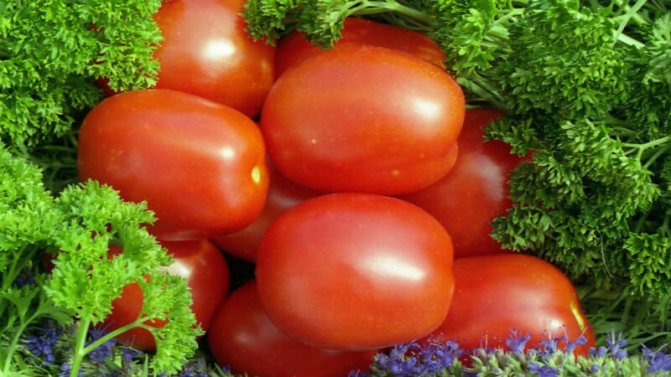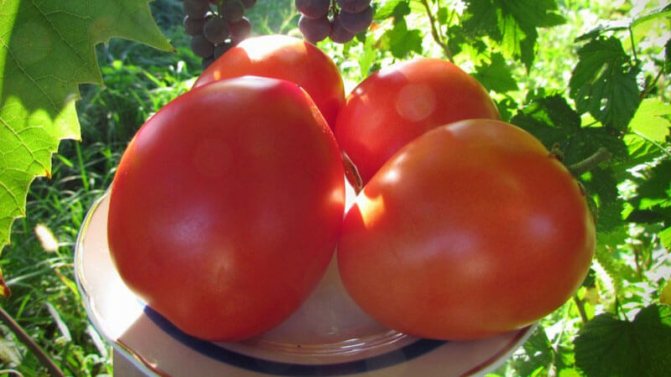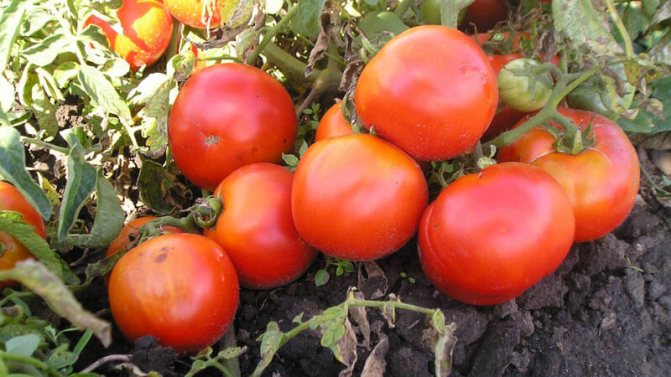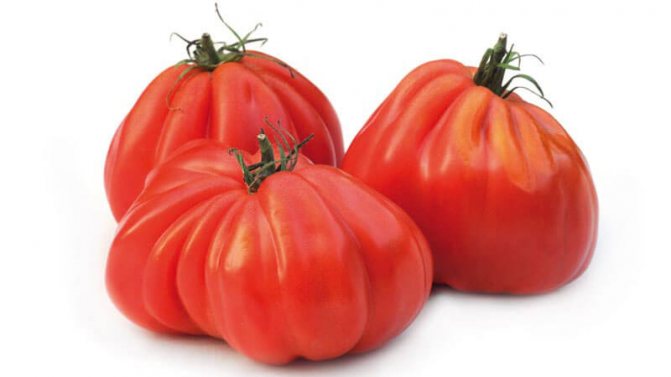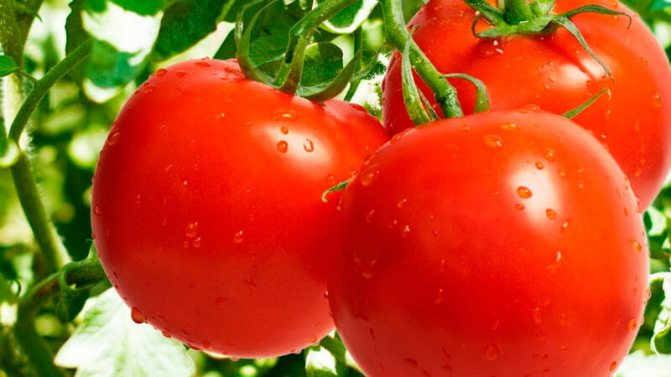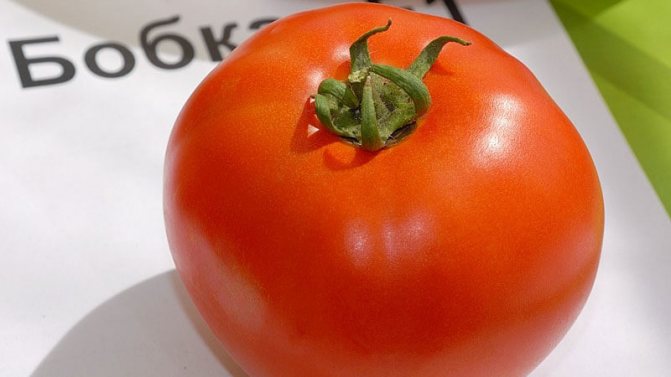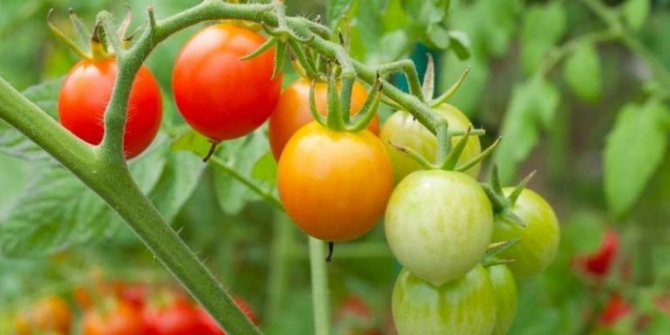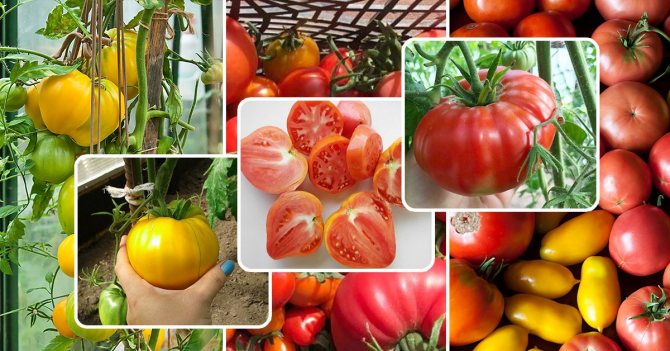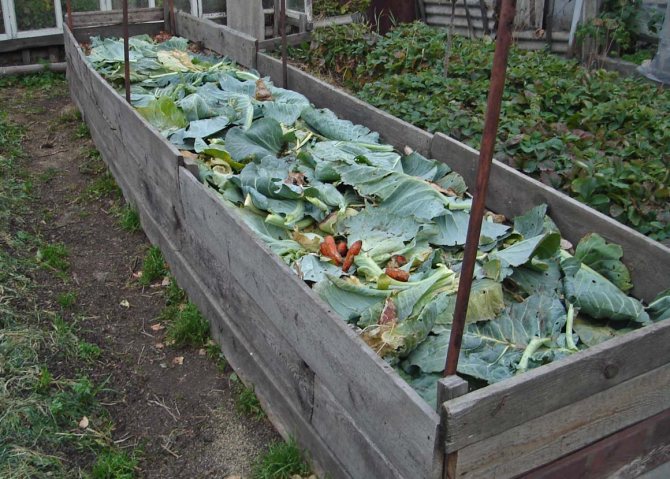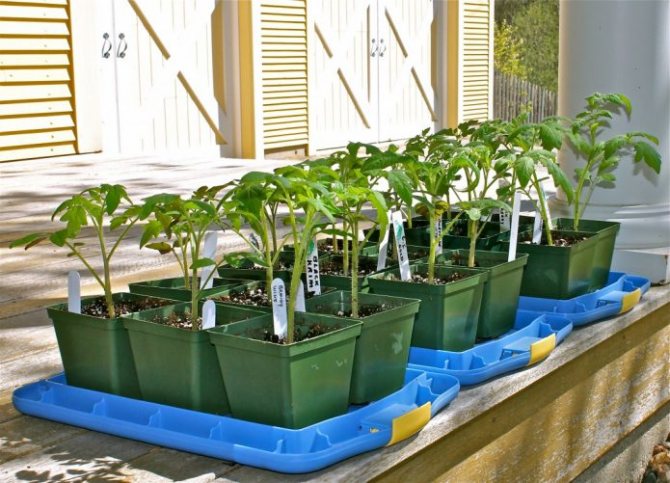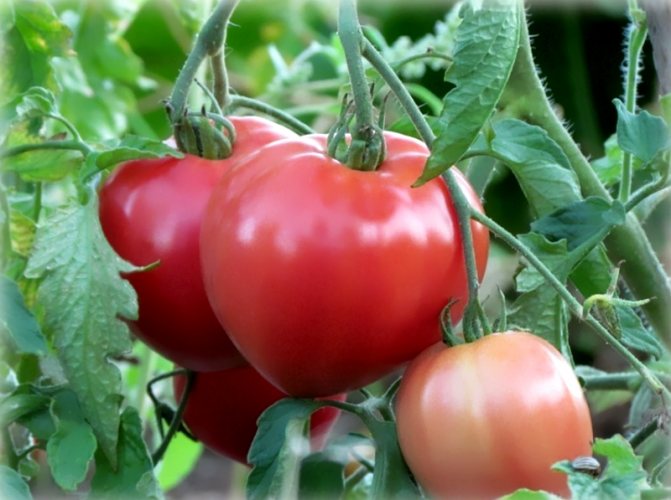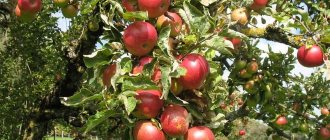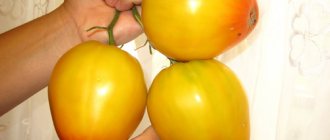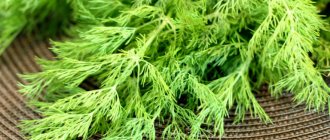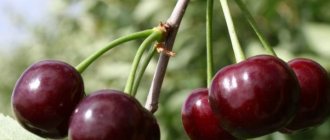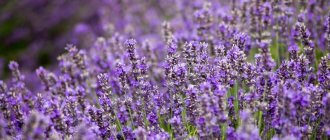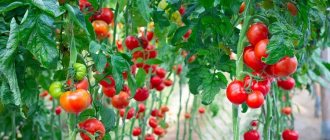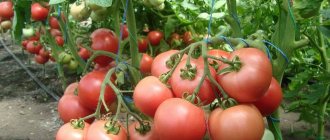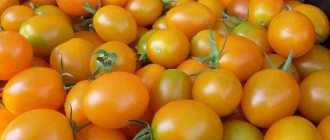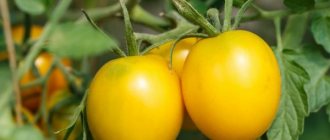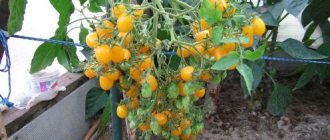About two hundred years ago, when tomatoes came from Europe to Russia, they were called "love apples" for their beauty and similarity in shape to the heart. The real homeland of these beautiful fruits is South America, where there is high humidity and constantly high temperatures. Therefore, tomatoes are so fond of sunlight and a warm atmosphere. And the North-West of Russia does not indulge in hot summer.
But, thanks to the efforts of Russian breeders, a solution was found, and many tomato varieties appeared that grow and bear fruit safely even in regions with an unstable climate and with a rather short summer season. So, varieties of tomatoes appeared for the Leningrad region.
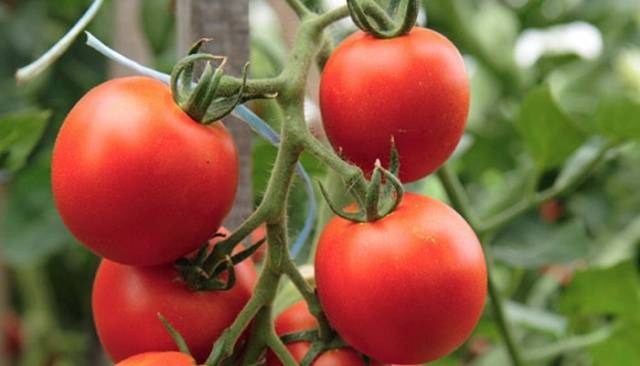
Climatic conditions of the Leningrad region
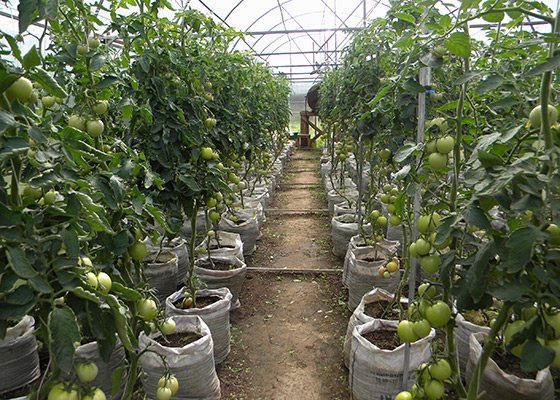

There are special requirements for tomato varieties for this region, because it is simply impossible not to take into account the damp climate, the minimum number of sunny days and sudden changes in the weather. Therefore, the gardeners living in the Leningrad region have to work hard to get a good harvest.
When choosing tomato seeds for the northwest, it must be borne in mind that they must demonstrate early germination, be able to form ovaries even in low temperatures, and most importantly, resist rot and late blight, and other fungal ailments.
Have questions? Ask and get useful advice from professional gardeners and experienced summer residents. Ask a question >>
The Leningrad Region is the first zoning zone requiring the cultivation of tomatoes with the obligatory use of illumination. There are many varieties of tomato adapted for the northwest.
Considering the poor tolerance of heavy clay soils typical for this region, it is quite possible to get high-quality fruits. But for this you need to make a large amount of peat and humus, special fertilizers, loosen the soil and annually replace the top layer of soil in greenhouses.
Zoning
The very concept of regionalization of plant varieties did not arise out of nowhere. Over the years, experts have tried to develop varieties suitable for growing in specific climatic conditions.
For this, several varieties and hybrids of the same tomatoes are planted in specially designated areas (for example, the Leningrad Region). Further, the plants are evaluated according to yield, early maturity, taste, suitability for processing, and resistance to diseases. This also includes economic indicators for the cost of producing a unit of output.
After a thorough analysis of all data, a hybrid or variety recognized as the best in all indicators is approved by the State Variety Testing Commission and is recommended for cultivation in the Leningrad Region.
This is a long and painstaking work. At the next stage, the task is to grow tomato seeds in sufficient volume for the Leningrad region. Moreover, it is necessary to provide planting material not only for large farms, but also for a huge army of amateur gardeners.
The best varieties of tomatoes
Tomato varieties adapted for the northwest include:
1. "White filling"
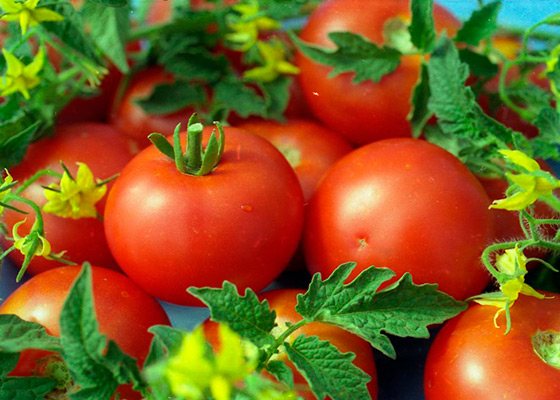

One of the best-selling species, familiar to many gardeners in the Leningrad region. It belongs to the determinant type of plants, which in open ground reaches 50 cm in height, and in closed - 70 cm.The roots of the plant do not go deep into the ground, but concentrate on the surface.
"White filling" takes root well in almost any conditions and begins to bear fruit within 90 - 100 days after the appearance of the first shoots. The variety gives a big harvest of red, medium-sized fruits with a thin skin and juicy flesh. They are distinguished by good keeping quality and transportability.
2. "Leningrad chill"
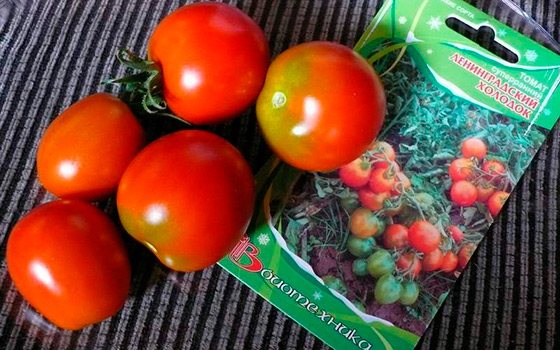

This tomato will be appreciated by lovers of low-growing bushes, because they do not exceed 35 cm in height, it does not stepchild, because during the formation of the crown, only three brushes with fruits are formed. Each weight does not exceed 80 g. The plant demonstrates good disease resistance, it is easy to care for, and it yields early and with excellent taste characteristics. This variety has exceptional cold resistance. It can be grown outdoors even in short, cold summers.
Growing and caring for tomatoes
When the summer resident decides on the variety, the main part of the work begins, planting seeds for seedlings. The summer resident chooses the timing himself, it is advisable to plant it in a permanent place in early June. Until then, planting material is grown at home.
Prepare the soil, pickle it and make grooves. The seeding depth is not more than 5 cm. Then the containers are removed to a warm, dark place until shoots appear. Pre-tighten with polyethylene or cover with glass.
Seedling care is essential. Strong seedlings are the key to a future harvest. If there is a lack of light, additional lighting is organized. Then the stems of the tomatoes will be more powerful, the plants will bloom in time and form ovaries.
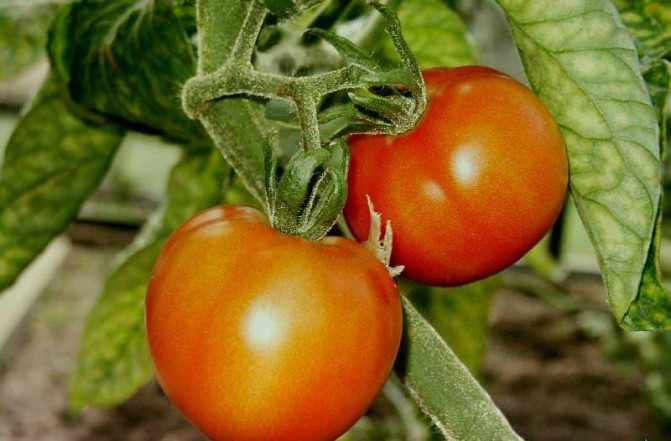

The plants are fed before and after diving. They use organic matter or complex mineral fertilizers.
Determinant tomato varieties
1. "Ballad"
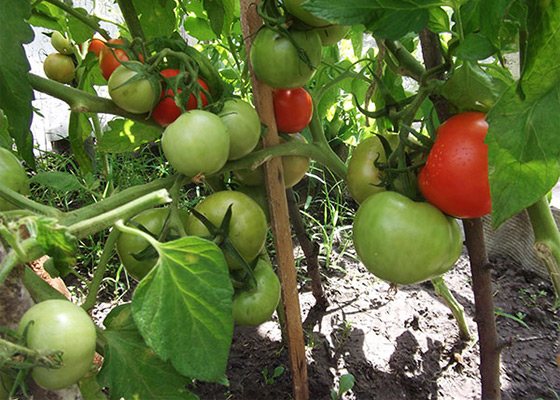

It grows short - up to 50 cm, very compact, but at the same time perfectly fruitful for such a small bush, but it definitely requires shelter.
Tomatoes ripen together, about 110 - 115 days after sowing and have a rough skin, juicy pulp and excellent aroma. Their taste is sweet and sour, pleasant. Up to 9 kg of fruits resistant to the main types of diseases can be harvested from 1 m2. The fruits demonstrate excellent keeping quality and transportability.
2. "Amber"
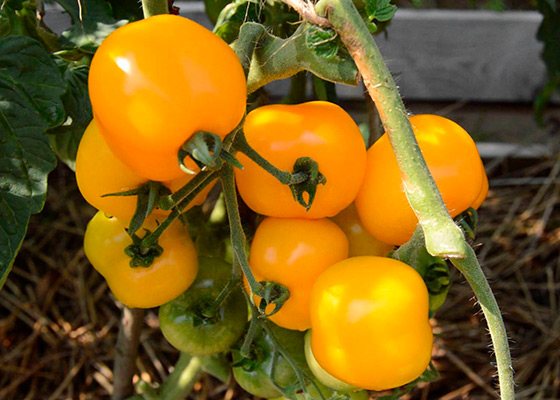

This poimdor is not afraid of unfavorable weather conditions and temperature drops, it feels great both in the greenhouse and in the open field, because this ultra-early ripening variety can bring a crop 80-100 days after planting. Gives a consistently high yield - up to 7 kg per 1 m2.
Yellow fruits will be appreciated by allergy sufferers.
3. "Gina"
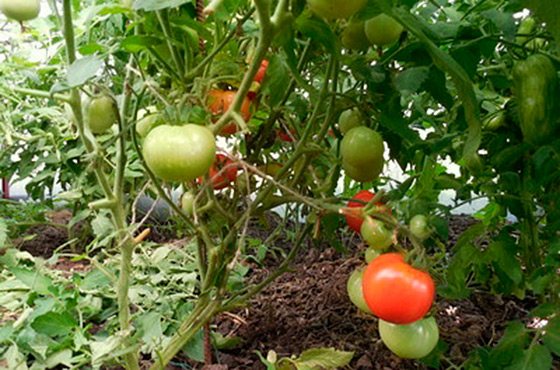

This is truly one of the best tomato varieties. Although it is recommended for cultivation in the Central Black Earth Region, it is able to adapt to almost any conditions, including the humid climate of the Leningrad Region.
Refers to mid-season species not exceeding 60 cm in height. When grown indoors, you can get quite large - up to 400 g fruits with a ribbed, spherical and flattened shape. Bushes can do without pinching, tying and pinching. The tomato is resistant to pests and is capable of producing up to 10 kg of fruit per 1 m2.
Harvesting and storage
The harvesting process is the same as in any region. Some of its peculiarities is the fact that with a short summer, the fruits often do not have time to ripen and you have to remove them unripe. This should be done in dry weather, and if this is not possible, then after harvesting the tomatoes are laid out to dry indoors. After that, they are placed in low boxes, which are placed in a well-lit place for ripening.
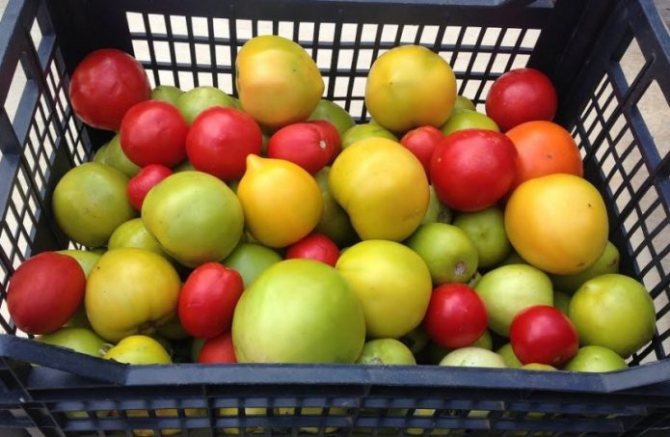

For ripening, tomatoes in low boxes are placed in a well-lit place.
The use of modern agricultural techniques, as well as the planting of zoned varieties, make it possible to grow good harvests of tomatoes even in the North-West region. A big plus for this will be the presence of a greenhouse, but even if there is none, then an experienced gardener of the Leningrad Region will not be left without tomatoes.
Tomato seeds for the Leningrad Region are sown within strictly defined terms. To calculate them correctly, you need to take the average time for planting seedlings in the greenhouse and subtract from it, literally by numbers, the optimal age of the seedlings and add the time for seed germination.
The early varieties are planted in the greenhouse on June 1 when the seedlings are 50 days old, the ultra-ripe ones are sown until April 15, the late ones are planted no earlier than March 10, the recommended seedling age is up to 70 days. If we talk about tomatoes for open ground: varieties can be sown in the ground from April 1st to 5th.
It should be borne in mind that the soil must warm up to a planting depth of at least 10 ° C. In the northern regions of the region, the landing dates are shifted to a later date, the gap is from 7 to 12 days. In these areas, frosts are possible in the first decade of June.
The type of soil also matters. Sandy loamy ones warm up much faster and deeper than loamy ones.
The longer a tomato ripens on a bush, the higher its taste. Ripeness can be determined not only by eye (by the degree of redness), but also by touch.
Zoned varieties of tomatoes for the Leningrad region are harvested with the onset of cold weather, when the tomatoes stop growing and ripening. This is roughly the end of August. But the weather always makes its own adjustments, and year after year does not happen. The complete harvesting of tomatoes involves digging soil in greenhouses, vegetable gardens and the elimination of vegetation remnants. It is better to burn it to avoid the possible spread of tomato diseases.
For Len. the region is not only picking up acclimatized varieties. Summer residents are also interested in other indicators:
- harvest volume;
- immunity;
- bush formation and more.
Proper care allows you to get the maximum benefit from any plant. If the summer resident puts all his energy into it, he gets it in full. Tomatoes are responsive to competent care.
Harvest varieties recommended for cultivation in the region:
- Olya;
- Verlioka;
- Ural;
- De Barao.
The size of the fruits is small, but the plants can withstand the nighttime drop in temperature, light frosts and short daylight hours.
Standard varieties
1. "Yamal"
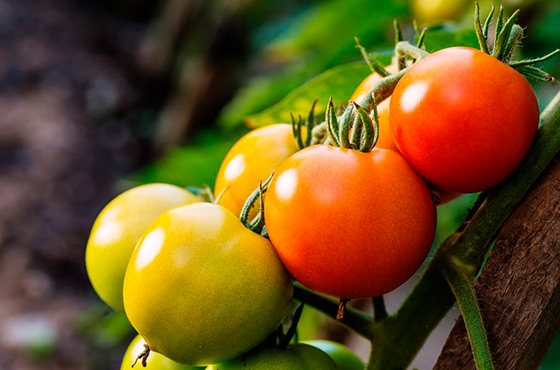

A typical northern crop that gardeners love to cultivate in the western region. It is distinguished by early maturity - the fruits appear on the branches 80 - 85 days after the formation of the first leaves. The plant has a pronounced stem and, at the same time, rarely reaches more than 35 cm in height. Demonstrates medium branching, therefore does not require tying to a support.
The fruit produces red, flat-round, medium-sized fruits. The yield is rather small - about 5 kg per 1 m2, but the culture is resistant to difficult weather conditions and is unpretentious in care. If desired, it can be cultivated even on a balcony or loggia.
2. "Sanka"
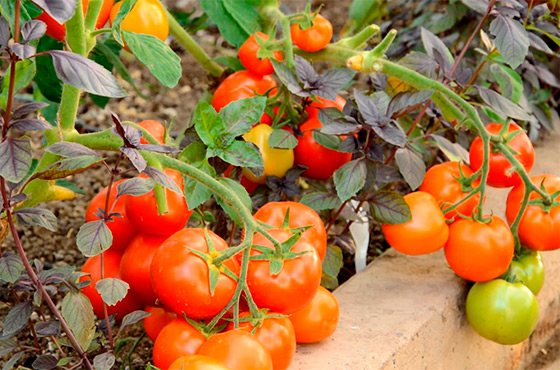

A popular tomato in the Leningrad region with an ultra-early ripening period. It differs in a standard bush with intermediate inflorescences and sometimes requiring crown formation. The fruits ripen 72 - 75 days after the appearance of the first leaves and are distinguished by a rich red color, smooth surface and an abundance of pulp.
Sanka can be planted in a greenhouse, or in an open area. It demonstrates excellent resistance to cold and lack of light, is capable of producing crops until the very frost, and fresh salads and winter preparations from it are simply wonderful.
Variety of varieties and hybrids for the Siberian region
The main merit of breeders is the appearance of tomato varieties of different ripening periods. Thanks to the painstaking work of scientists, the first fruits from tomato bushes can be obtained without waiting for autumn.There are varieties of tomatoes for the North-West, not just early ripening, but ultra-early ripening, which begin to bear fruit at the end of June.
The unusually early ripening of fruits is informed by reviews about the tomato Riddle, it begins in just 85 days. This variety is to the liking of lovers of dishes with tomatoes, who do not want to wait patiently for autumn tomato abundance. The yield is low, but other positive qualities compensate for this disadvantage:
- the diminutiveness of the plant, its "growth" of only 40-50 cm, allows you to place on a small garden the size of a square meter from 6 to 8 bushes;
- developed stem is stable without additional support, type - determinant;
- fruits ripen all of the same size, as for selection - round, red, weighing 80-90 grams (in a greenhouse up to 100 g).
Tomatoes in a brush for 4-6 pieces. Another curious feature, without which the description of the tomato Riddle will be incomplete, is the attractive absence of "extra" shoots-stepsons. Resistance to most diseases has also been noted.
Close to the Riddle in terms of early maturity, these are the reviews about the Boney MM tomato from the experience of gardeners. It is harvested as early as 2.5 months after seed germination. In the southern regions, they even refuse seedling preparation, the agrotechnology of this variety of nightshades is so simple.
Impressive bundles averaging 80 grams each on a miniature bush 50-55 cm tall is a common sight. The plant does not give any trouble either in tying or pinching. Flat-round fruits of bright red color, good taste. Harvest - 1.5-2 kg.
In the line of varieties "Siberian Garden", the tomato apparently-invisibly differs in the ability to set on the brushes from 15 to 20 fruits of different sizes. Indeed, a lot of tomatoes are formed on one bush. If you leave 5-6 brushes for fruiting, the yield will be about 4 kg. Tomatoes are round in shape, and their weight varies from 50 to 300 grams.
The ripening process is uneven, lasts about a month. Despite the fact that this species is classified as an early one, it should be expected that tomatoes from the bush will be harvested until the very last moment of the plant's life. For the first time the description of the tomato Apparently invisibly registered in 2001 by Siberian scientists. According to the type of cultivation, it is ranked as medium-sized determinant.
The description of the variety and characteristics of the Yamal tomato is perfectly familiar to all fans of the early compact representatives of nightshade crops:
- a determinant, truly tiny bush reaches only 40 cm, and this is in a greenhouse (on the ground it is 25-35 cm);
- on the site of 1 sq. 6-8 plants of the species are perfectly adjacent
- about 1.5 kg of tomatoes are obtained from one bush;
- harvest time - 85 days from sowing.
For these miniature tomatoes, the yield is record-breaking. In the phase of biological maturity, the fruits are of a beautiful red color with a firm skin. The taste is excellent, sweet and sour. High solids content (4-5%).
In the top of decorative tomatoes, reviews of the Yamal tomato elevate it to the leaders. This plant has an irresistible visual appeal during the fruiting period, when it is hung with tomatoes of different shades and sizes. Will decorate any loggia. Will grow without problems on the windowsill in the kitchen. Very convenient - tore it off the bush and immediately into the salad.
At the beginning of the second decade of the 21st century, there were reviews about the tomato Lazytayka Siberian Garden, an early maturing hybrid of the first generation. The product of the selection of Siberian creators is distinguished by its increased cold resistance, which is what they wanted from it. Determinant, standard type. Usually the height of the bush does not exceed 60 cm. Compact, well-leafy, fruitful, early ripening type of tomato.
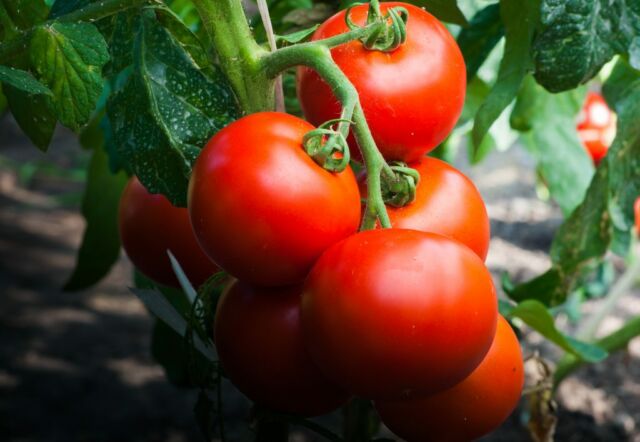

A tomato with a potato leaf, such a description of the Yablonka tomato of Russia is inherited along with the seeds by many generations of gardeners in our country. The determinant standard plant grows tall, about 100 cm.Thanks to many years of work to improve the variety and without unnecessary work on the formation of a bush, it gives a consistently high yield of spherical small fruits of about 100 grams.
Small oblong-rounded tomato Shaggy bumblebee resembles a peach with its velvety fluffy skin. On one bush 3-5 kg of pubescent pink-red tomatoes ripen. The time from immersing the seeds in the soil to the first ripe tomatoes is about 120 days. A standard bush with a final growth point.
Early ripe hybrid tomato Server F1 refers to determinant. The relatively small height (60 cm) and compactness of the plant determine the love of farmers with a small plot for it. The region of residence will prefer the southern one. In the conditions of the Siberian summer, good results from the variety should be expected only in the warm climate of film shelters. Spherical bright red fruits from 60 to 150 grams (this depends on the sufficiency of heat and light).
Tomato Server F1
In 2008, a description of the Nature Riddle tomato, bred in the Siberian region, appeared in the list of mid-fruiting tomatoes. This is a representative of indeterminate large-fruited varieties for any type of cultivation. Of interest is the fantastic coloration of flat-rounded fruits. In biological maturity, it is uneven orange and red on the outside, and soft pink inside.
Perhaps the name was given to the variety precisely because of this feature. The fruits are capable of reaching 700-800 grams of weight. Abundant watering causes cracking. The taste is sweet. The rind is thin, not too hard. Harvest from 8 kg. Long-distance transportation requires careful handling of tomatoes. Immunity to tobacco mosaic, late blight and apical rot has not been confirmed.
Amateur gardeners are happy to leave reviews about the Red Truffle Siberian Garden tomato at forum sites and exhibitions of agricultural achievements.
A beautiful, non-standard shape reminiscent of a red pear and an excellent spicy taste elevate the variety to a prize-winning place in the ranking of mid-season tomatoes.
The following characteristics should also be added to the description:
- standard formation - in two stems;
- fruits in simple brushes, 4-8 pieces;
- average fruit weight is about 150 g;
- from 6 to 8 kg of yield per unit.
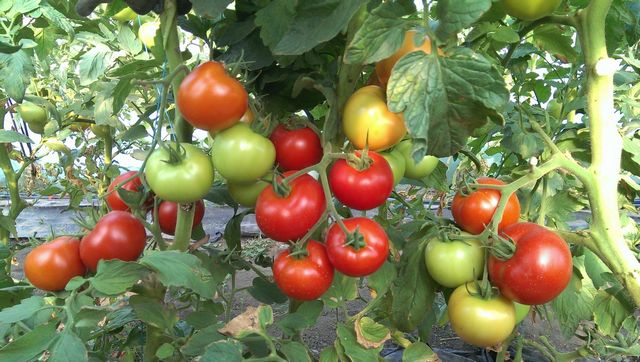

To all that has been said, add excellent immunity to late blight and other problems of nightshade.
It looks like a pear and a tomato of 100 pounds, but only of a rather large size. The surface of its fruit is highly ribbed, pink-red in color. Fruit weight from 100 to 350 grams. Ripening period is early. The plant is tall, without the final point of growth, reaches 1.8 - 2 m. Fruiting carpal, 3-5 pcs. The yield is high. Universal use in cooking.
Tarasenko's tomato is in no way inferior to the Red Truffle, its yield in favorable years reaches fabulous numbers - 20-25 kg. The hybrid for any soil is tall, liana-like. The main stem is more than 2 meters long. Fruits 200-300 grams, lined, thick-skinned, red with an orange tinge, fleshy, collected in fan-like clusters.
Tomato Tarasenko
Dessert from the garden
The chocolate-covered marshmallow tomato got its unusual name for its amazing brown-red color. Greenish longitudinal streaks on the peel give a zest to the color. The sweetness of its rounded fruits is so great that they can successfully replace dessert. It is thanks to this persistent sweet taste that the variety is extremely popular, despite its relative "youth".
With oblong cylindrical fruits, tomato Zabava will appeal to all land owners without exception. Great is not only the aesthetic appeal of tall bushes, hung with bundles of unusually long tomatoes. The yield is also commendable. From one bush, 8-10 kg of fruits suitable for canning are obtained.
Numerous positive reviews about the Canary tomato are found on Internet sites where residents of the Siberian region and Altai Territory appear. It is in their changeable climate that the large-fruited mid-season variety gives a record harvest. There is no secret here. The variety is "local", bred in Siberia and for Siberia. Even in short daylight conditions, it gives over 10 kg of large scarlet tomatoes 180-200 grams each. The plant is indeterminate, tall. Medium early fruiting.
Indeterminate varieties
Among the indeterminate type tomatoes, there are many that are well adapted for cultivation in the cold climates of the northwest. Some of the most popular are:
1. "Northern Beauty"
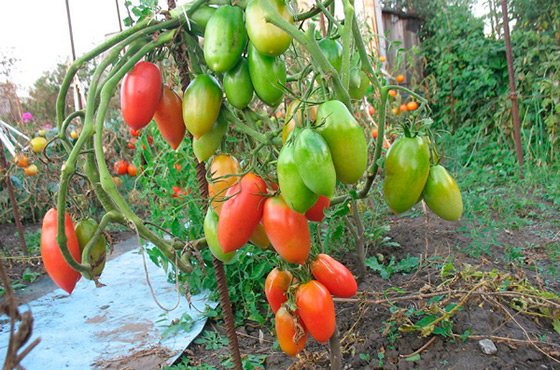

A representative of this species reaches 150 cm in height, therefore, it requires mandatory tying to a support. Begins to bear fruit 120 days after the appearance of the first leaves, giving a harvest of pink fruits with a dense and sweet juicy pulp.
From one inflorescence 5 - 6 tomatoes are formed with a weight of 60 to 120 g.
This is one of the best tomato varieties for the northwest, resistant to fusarium and other dangerous diseases, well tolerating a sharp change in temperature. If you like elongated plum-shaped tomatoes, take a closer look at this variety.
2. "Mithridates f1"
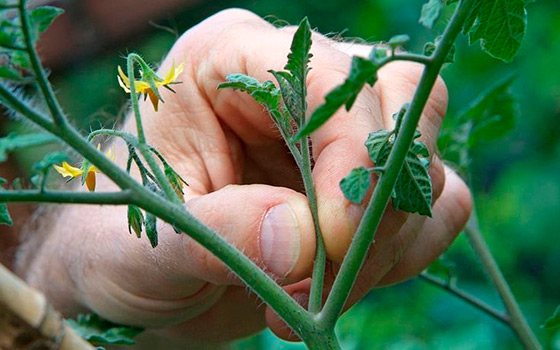

It is a mid-early indeterminate hybrid with a vegetative period of about 110 days. It is no secret that hybrids are more resistant to harsh weather conditions, and they are more resistant to diseases.
This species can be grown all year round. In summer - outdoors, and in winter - in a greenhouse.
This tomato is characterized by shortened internodes, which makes it possible to cultivate it in greenhouses with a low trellis. The brush extending at a right angle from the stem contributes to the uniform formation of fruits.
Influence of the region's climate on the cultivation of horticultural crops
The climate of the northwestern region is characterized by high humidity and a large amount of groundwater. This is dangerous because it can lead to rotting of the roots. Also, repeated spring frosts are possible until the end of May, which can damage already planted garden crops. In the vast majority of lands in this region, the soil is acidic. This must be taken into account when choosing seedlings. Either fertilize the mail with special alkaline preparations, or choose those plant species that are adapted to this environment. Also, in many places the post is very sandy, so many gardeners put a fertile layer of peat on top. And, of course, it is difficult to grow perennials in this environment due to rather severe frosts and almost no snow.
Video - Proven delicious tomato varieties for the northwest of Russia
Semi-determinant varieties
Semi-determinant varieties have absorbed the best qualities of determinant and indeterminate varieties. They give a crop 10 - 12 days earlier than the last and feel good in the cramped conditions of greenhouses. The most popular varieties include:
1. "Leningrad early ripening"
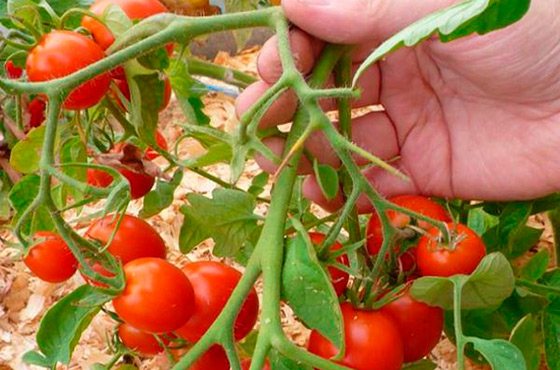

This is one of the shortest species: the plant grows up to 30 cm in height and does not require tying and pinching. The early ripening of the harvest is characteristic of the "Leningradsky early ripening" tomato - 60 - 65 days after the appearance of the first greenery. Already in mid-August, gardeners finish the season, which is a big plus for those living in this region.
The tomato tolerates bad weather well, and due to its early maturity, it does not have time to be affected by late blight. From 1 m2, you can get up to 14 kg of small fruit, ideal for pickling as a whole.
2. "Baron f1"
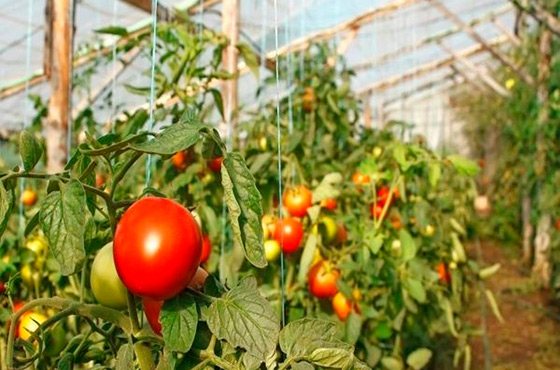

An ultra-early ripening tomato species that can be grown outdoors in the south, and only under cover in the north of the country.The duration of the growing season is about 95 days, during which the plant manages to acquire 5 - 6 tomatoes on each brush.
As a result, up to 18 kg of a round-shaped tomato with a slightly pointed tip can be harvested from 1 m2. They have dense and fleshy flesh, incredibly pleasant taste. Baron f1 is versatile in use, and its advantages include good immunity to major diseases, large-fruited and long-term fruiting.
Caring for tomatoes after transferring to a permanent place
After planting in the open field, the plants are regularly watered, loosened, removed weeds and fed. Fertilizers are alternated so as not to cause a reverse reaction. You cannot overfeed tomatoes, they will begin to develop incorrectly and stop forming ovaries.
Depending on the variety of tomatoes, props are installed, bushes are formed and the growth point is removed. Some summer residents practice mulching, this helps to retain moisture and prevents weeds from growing. Treatment from pests and diseases is required, since an infected plant can destroy nearby bushes. The grower runs the risk of losing most of the crop.
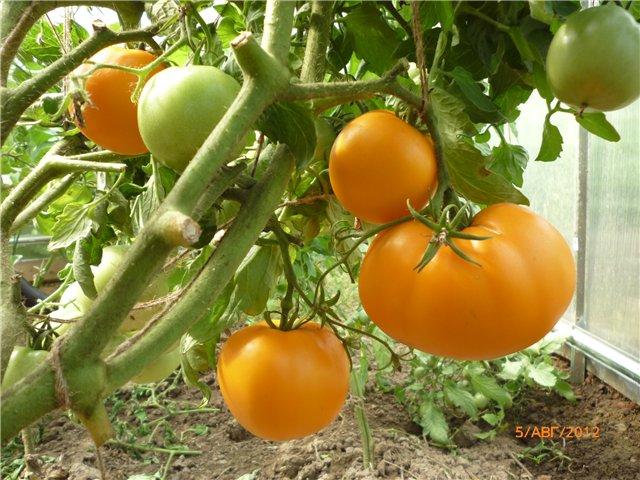

Growing conditions
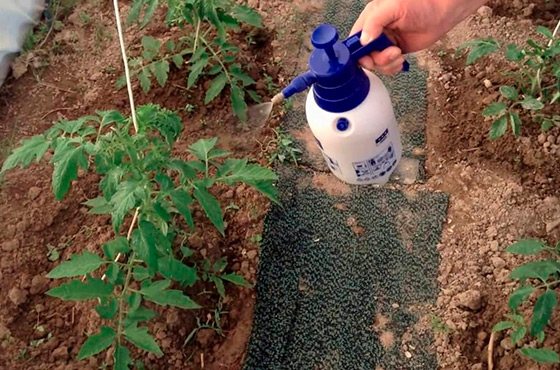

As already mentioned, there are tomatoes that are suitable for cultivation in unprotected soil, and there are those who need shelter. Most are still not capable of producing a good harvest in a cold, changeable climate, so it makes sense to look closely at those that reveal their potential to the maximum in the greenhouse. These include the "Golden Queen", "Palace", "Igranda", "Fox" and others. There are moisture-resistant varieties - "Yablonka", "Dobrun" and others.
It makes sense to put "Nevsky", "Gruntovy Gribovsky 1180" under the film. There are a lot of options to choose from. You can preliminarily read the reviews on the Internet, find out what fellow countrymen planted and are planting, what are their successes in cultivating certain varieties.
All this will help you to orient yourself and choose a variety that will meet all the requirements for it, will fully meet the body's needs for vitamins and minerals and will give you an unforgettable gastronomic pleasure.
Oksana Shavyrina
Best options for greenhouses
Both early and mid-season tomato varieties can be planted in shelters. It is better to pinch very tall bushes, this stimulates the formation of ovaries and makes it easier to care for the plants. Most of the presented varieties grow well and develop in cold greenhouses without additional heating.
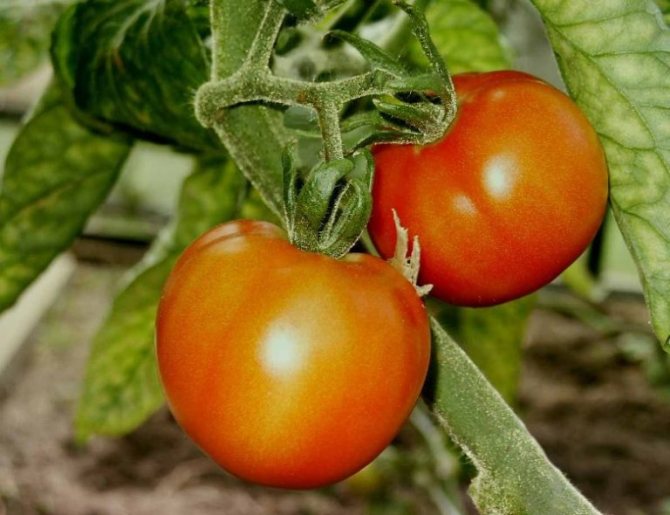

It is necessary to consider the most promising varieties:
- Leningrad early ripening. The bushes are medium in size, semi-determinate, and thrive in plastic and glazed greenhouses. Formation is necessary, lower leaves are removed to stimulate new ovaries. The fruits are medium-sized, bright red, with a thin skin. The taste is pleasant, sweet, non-watery. Ripening is fast and friendly, the first tomatoes appear from mid-July, in August the formation of ovaries ends. Due to the shortened growing season, the plant practically does not suffer from late blight.
- Gold Queen. An early ripe variety with a high yield. Up to 10 kg of tomatoes can be harvested from 1 m² of plantings. The bushes are tall, not too sprawling, require formation and fastening to strong supports. Fruits are deep yellow, medium-sized, ripen in clusters of 3-5 pcs. The taste of ripe tomatoes is honey-sweet, very rich, the aroma is delicate and delicate. Tomatoes are good for salads, side dishes, they are used to prepare a beautiful bright yellow juice, which can be drunk freshly squeezed or harvested for the winter.
- Leningrad Giant. A very early variety, the first tomatoes are harvested 97 days after germination. Determinate bushes, non-standard, moderately spreading. To increase the yield, pinching is recommended. Maturation is amicable, from July to August. The fruits are even and large, weighing 300 g each.The color is deep pink, the taste is dessert, sweet. Ideal for salads and making thick tasty juices.
- Palace. Medium sized determinant shrubs are suitable for film or glazed shelters. Sensitive to soil nutrition, reacts to feeding by increasing yields. Fruits are red, flat-rounded, with a slight ribbing at the stalk. The taste is pleasant, without excess acid. Ripe tomatoes are very beautiful, have a long shelf life and are suitable for transportation.
- Igranda. Early tomatoes with a shorter ripening period. Suitable for heated greenhouses and well-insulated greenhouses. They are sensitive to the composition of the soil, they like frequent feeding. Bushes of medium size, not too sprawling, resistant to diseases and pests. Fruits weighing up to 100 g, perfectly round, without ribbing at the stalk. The taste is pleasant, full-bodied.
Features of the Leningrad region for tomato
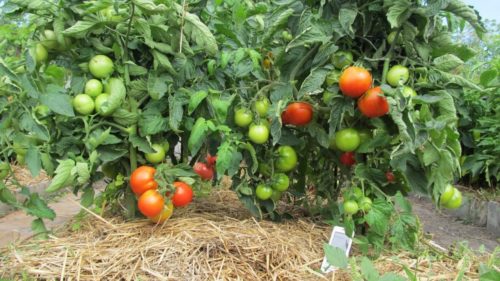

Growing tomatoes in the Leningrad Region requires special attention. So, in St. Petersburg and in the region, gardeners often grow this vegetable in greenhouse, greenhouse conditions. They grow especially actively in greenhouses, where there is additional heating. For the Northwest region, special so-called cold tomatoes have been bred. They must meet the following features:
- early to bear fruit;
- short growing season;
- fruits should be small.
In the Leningrad region, tomatoes grow well in open beds. It is necessary to pay special attention to the process called "hardening". It lies in the fact that 14 days before planting young animals in a permanent place, it must be periodically placed in street or greenhouse conditions. Just 2-3 hours and your tomatoes will be less susceptible to sudden temperature changes and negative climatic conditions in the region.
Also pay attention to the date of planting tomatoes. Varieties that ripen early are best transplanted no earlier than the first days of June at the age of at least 50 days.

